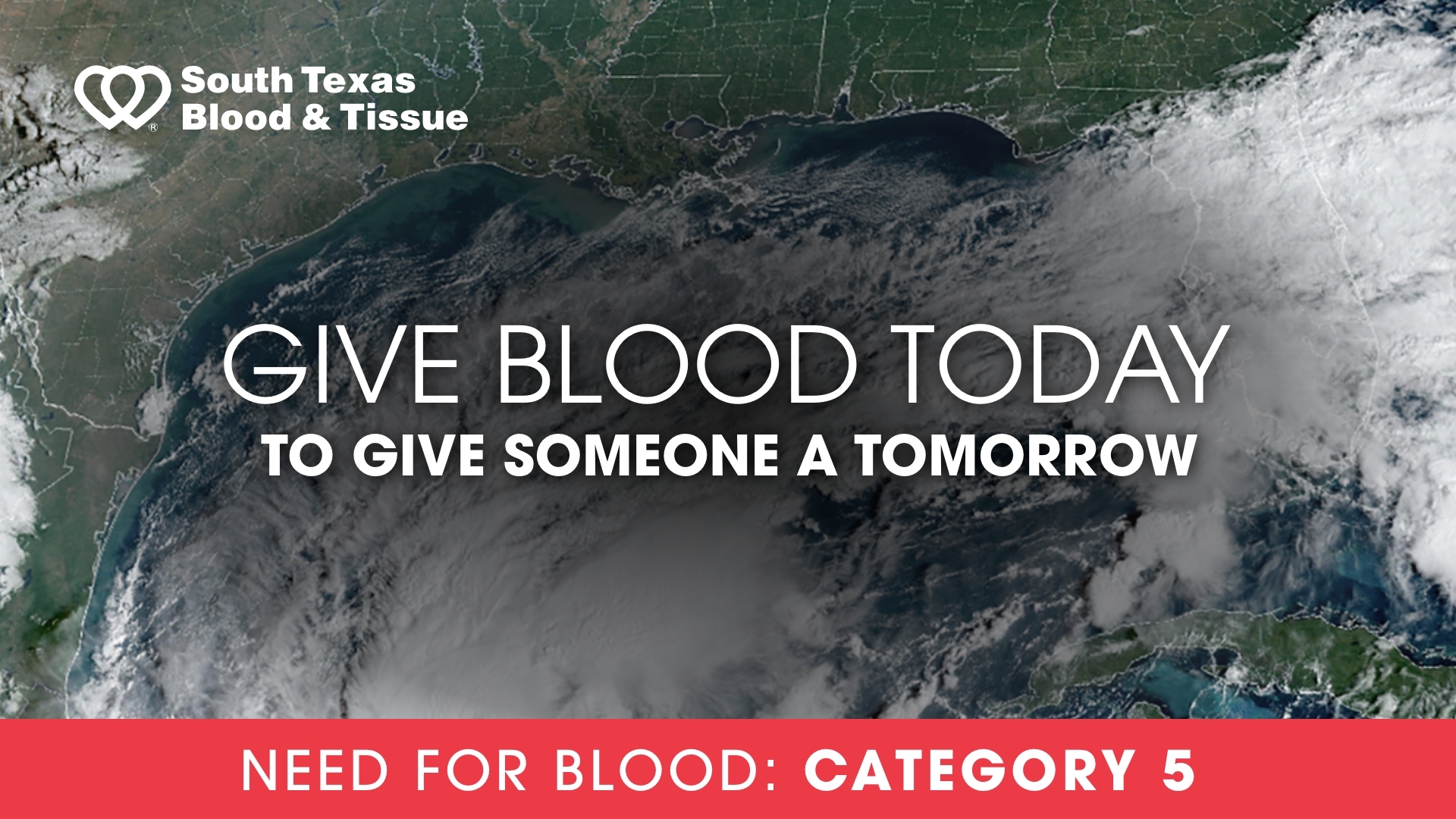SAN ANTONIO – Hurricane Milton, now a powerful category 5 hurricane, is closing in on Florida’s west coast, with landfall expected Wednesday night. It arrives as Floridians are still recovering from the devastation left by Helene, which hit last week.
North Carolina and Tennessee are also in need, and platelet donations are needed to help local patients due to aftermath of Helene.
South Texas Blood & Tissue stands together with fellow blood centers and has sent more than 100 units of O blood to prepare for shortages expected from Hurricane Milton, which is slated to be one of the worst storms Florida has faced in more than a century.
Despite Florida blood centers’ efforts to keep operations running during Hurricane Helene, hundreds of whole blood and platelet donations were lost because of power outages, disrupted work schedules and storm damage.
South Texans can help our neighbors by donating with South Texas Blood & Tissue. Community support is crucial to having an adequate blood supply across the country. Your generous donations are helping to save lives and bring hope during this difficult time.
All blood types are needed, especially O-positive and O-negative.
Much like South Texas Blood & Tissue, Florida, Tennessee and North Carolina hospitals rely on their community blood centers to have blood available for their patients. Blood transfusions help cancer patients undergoing chemotherapy, new mothers and those who may be critically injured.
“Our neighbors have been affected by Hurricane Helene and it’s been very challenging for them. With another hurricane in the horizon, it is best to be as prepared as we can,” Audra Taylor, Vice President of Blood Operations, South Texas Blood & Tissue said. “If we can all have our neighbors and friends step up, we can help recovery efforts.”
Both blood donors and blood drive sponsors are needed. Schedule a blood donation or drive by visiting SouthTexasBlood.org or call 210.731.5590 to book a donation.
